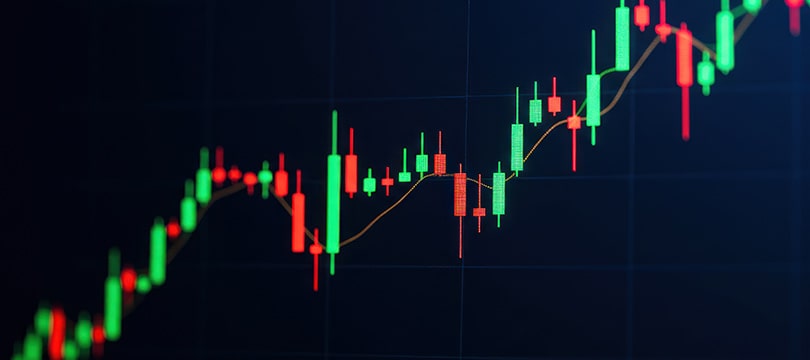In the world of
Forex, knowing what's happening behind the scenes of the global economy is crucial. When we talk about
currency movements, we're not just referring to charts and candles: behind every price fluctuation, there are broader economic forces pushing the value of a currency up or down. These forces are often represented by
macroeconomic data – numbers and reports that tell the story of how a country is managing its economy.
Understanding this data offers you a huge advantage as a trader. Being able to correctly interpret the information coming from macroeconomic reports allows you to anticipate market movements and make decisions based on real data rather than intuition. Let's look at the main macroeconomic data to keep an eye on and how we can use it to improve our trading operations.
GDP: The Heart of the Economy
The
Gross Domestic Product (GDP) is like the heartbeat of an economy. It measures everything a country produces in goods and services over a given period of time. When a country's GDP grows, it means the economy is expanding: more production, more prosperity, more demand for that country's currency.
- Example: Imagine that U.S. GDP shows a strong quarterly increase. In this case, the dollar is likely to strengthen, as a strong economy attracts investment from abroad. Global investors seek opportunities in countries with stable economic growth, thus increasing the demand for dollars.
Conversely, if GDP starts to slow down, this can be a sign of economic weakness. A slowdown in growth suggests there are problems in the economy that could lead to a devaluation of the currency.
How to Use GDP in Your Operations
The release of GDP data is one of the most important events that Forex traders closely monitor. Surprises, when GDP is much higher or lower than forecasts, can trigger strong currency movements.
An increase in GDP suggests economic growth, which is generally positive for the country's currency. However, you have to be careful not to focus only on the raw GDP value. The
composition of GDP is also important. For example, if GDP growth is mainly driven by exports, this may indicate strong external demand for the country's currency, further strengthening it.
Interest Rates: The Main Driver of Currencies
When it comes to
Forex,
interest rates are the king of indicators. Interest rates, decided by central banks, directly influence the value of a currency. When rates rise, investors are attracted by higher yields, leading to increased demand for the country's currency.
- Example: Let's think about the Federal Reserve in the United States. When the Fed decides to raise interest rates, the dollar tends to strengthen. Investors seek to take advantage of higher yields on U.S. securities, pushing the dollar up. On the other hand, if the central bank decides to lower rates, we can expect a devaluation of the dollar, as investors will seek opportunities in other countries with better yields.
Monitoring Central Bank Decisions
Interest rate decisions are generally anticipated by experienced traders. Statements from central banks, such as the Fed in the U.S. or the ECB in Europe, provide clues as to when there might be changes in rates. These changes affect not only the value of the currency but also investor behavior.
A recent example is the Fed's
rate hike cycle between 2015 and 2018. During this period, the Fed gradually raised interest rates to contain inflation and normalize post-crisis monetary policy. The result? A steadily strengthening dollar against many global currencies, as investors poured into U.S. markets.
Inflation: The Silent Effect
Inflation is one of the most subtle but powerful economic forces. Moderate inflation is normal and even desirable, as it indicates a growing economy. However, when inflation becomes uncontrolled, it can drastically reduce the value of a currency.
When the prices of goods and services rise too quickly, the purchasing power of the currency decreases, and this can prompt a central bank to take restrictive measures, such as raising interest rates.
- Example: If inflation in the United States starts to rise too quickly, the Fed may decide to raise interest rates to control prices. This will lead to a strengthening of the dollar, as higher rates attract investors. Conversely, if inflation is too low or negative, it may indicate that the economy is struggling and that the central bank may take expansionary measures, thus weakening the currency.
Inflation and Related Indicators
Monitoring inflation alone is not enough. One must also keep an eye on
consumer price indices (CPI) and
producer prices (PPI). This data tells us whether prices are rising or falling and to what extent. For example, an increase in the CPI may indicate that consumers are paying more for goods and services, which can lead to monetary tightening by the central bank.
Unemployment Rate: A Social and Economic Barometer
The
unemployment rate is one of the most closely watched indicators by traders. A low unemployment rate indicates that the economy is strong, that more people are working, earning and spending, which helps sustain demand for goods and services. Conversely, a high unemployment rate suggests that the economy is slowing down.
- Real example: In the UK, if data shows a drop in the unemployment rate, we can expect a strengthening of the pound. This is because the reduction in unemployment suggests that the economy is growing and that there will be increased domestic demand for goods and services.
The Impact of Unemployment on Interest Rates
A rising unemployment rate can also influence central bank decisions regarding interest rates. If unemployment rises, the central bank may lower rates to stimulate the economy. On the other hand, low unemployment could prompt the central bank to raise rates to prevent the economy from overheating.
Trade Balance: The Weight of Imports and Exports
The
trade balance is another important indicator for predicting currency movements. It measures the difference between the value of a country's exports and imports. If a country exports more than it imports, it has a
trade surplus, which tends to strengthen the currency. Conversely, a trade deficit can weaken the currency.
- Example: China, one of the world's largest exporters, tends to maintain a strong yuan when its trade balance shows a strong surplus. This is because the high volume of exports means that there are more countries buying Chinese goods, increasing demand for the yuan.
Assessing the Trade Balance and Its Implications
Traders should look at the trade balance not just in terms of absolute numbers, but also in the context of global economic policies. For example, during periods of trade wars or tariffs, a country's trade balance can be directly affected, leading to significant currency fluctuations.
Retail Sales: The Pulse of Consumers
Retail sales are one of the best indicators of an economy's domestic demand. When consumers spend more, it means there is confidence in the economy and that growth is continuing.
- Example: If retail sales in the United States exceed expectations, the dollar could strengthen. Retail sales data is often used to understand if consumers are spending more, suggesting that the economy is growing at a healthy pace.
Integrating Macroeconomic Data into Trading
Now that we've explored the main macroeconomic data, the real question is:
how do we integrate it into Forex trading? The first step is always to
monitor the economic calendar. It allows you to know when key data will be released, so you can plan your operations in advance.
In addition, it is essential to combine
fundamental analysis – which is based on this data – with
technical analysis. For example, if a country's unemployment rate is falling and technical indicators show an upward trend, it might be the right time to open a long position on that country's currency.
Remember that macroeconomic data can generate strong volatility in the markets. Be prepared to react quickly and take advantage of rapid and decisive price movements.




